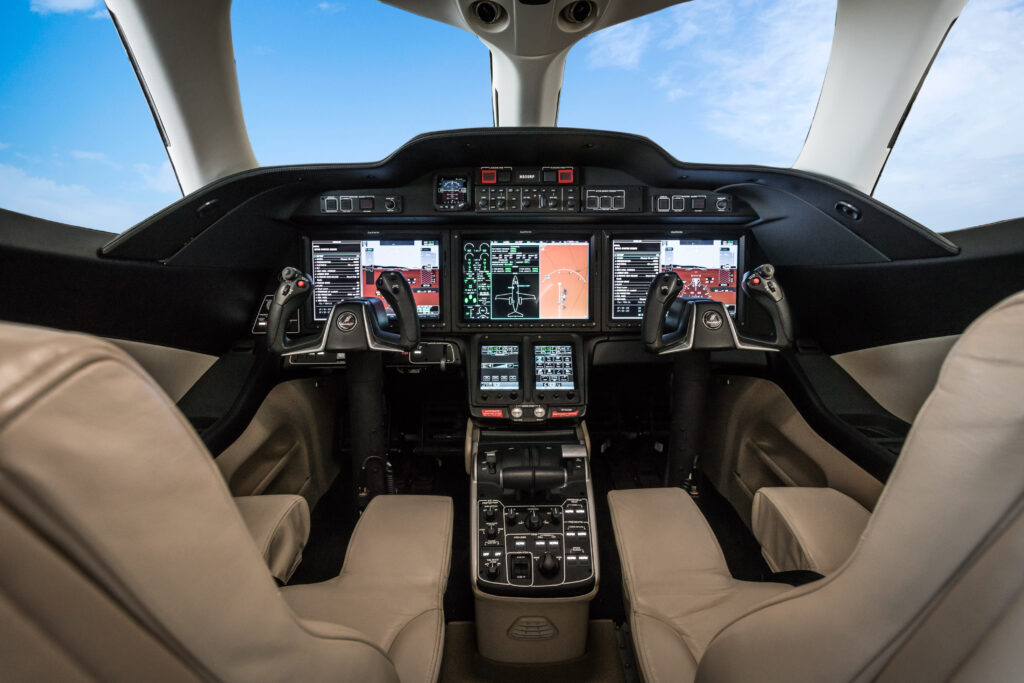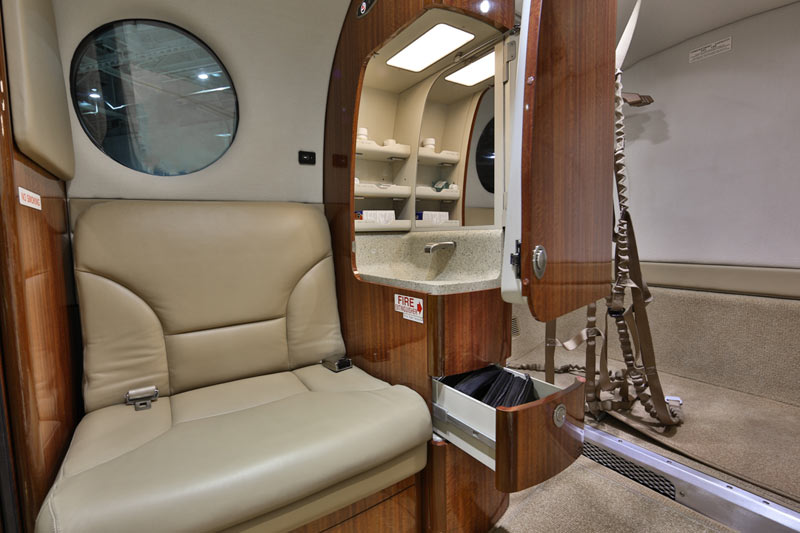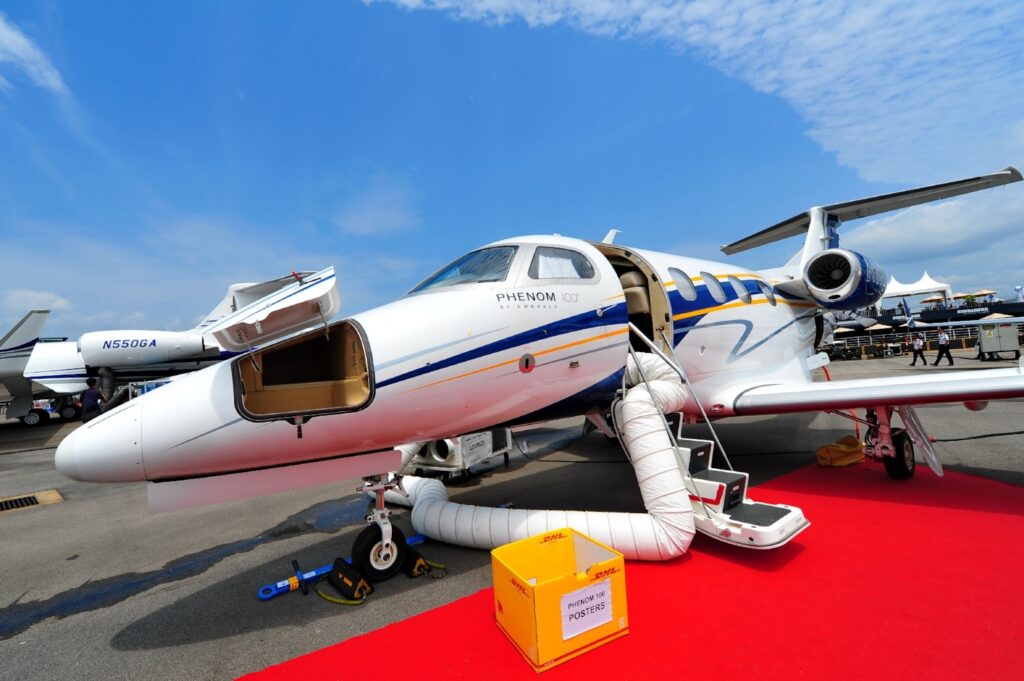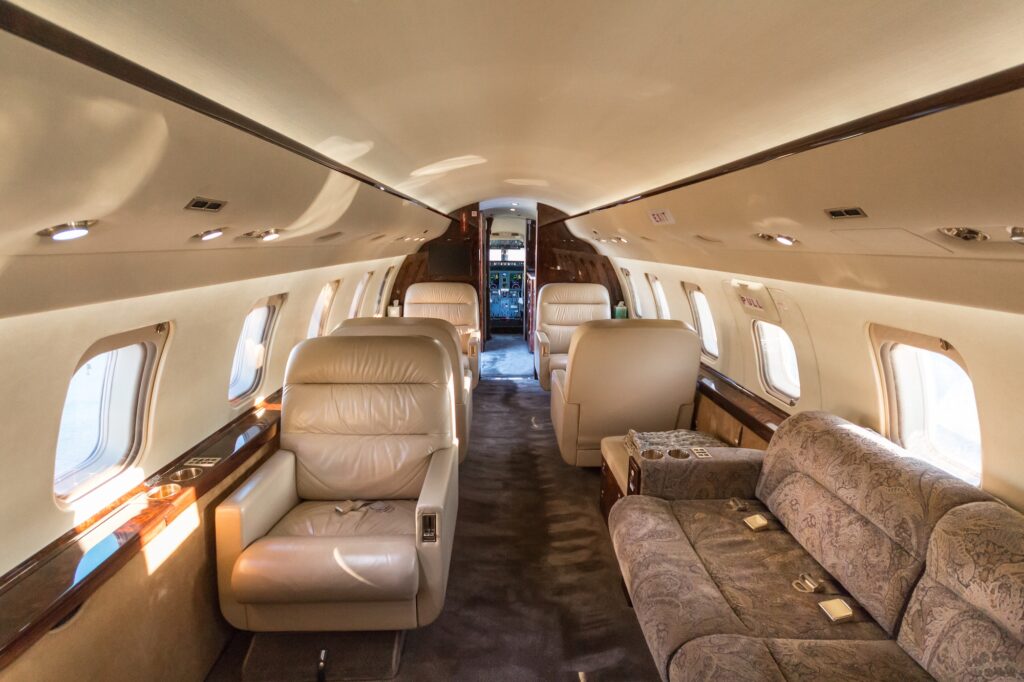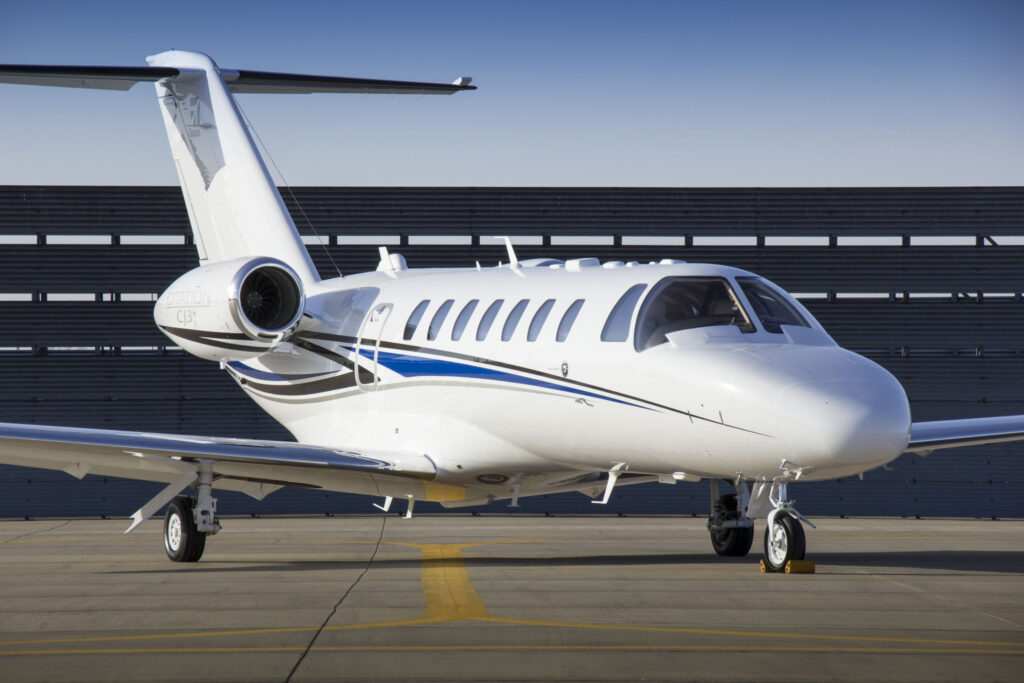Garmin is arguably the most popular provider of avionics systems in general aviation, and their options continue to improve from one year to the next. Some of the most popular single-pilot jets and turboprops are equipped with Garmin flight decks, including the G1000, G3000, and even Embraer’s Prodigy line of avionics systems based on Garmin flight decks. For those looking to move into a turboprop or jet with Garmin avionics, let this serve as a list of some of our favorite options at Charlie Bravo Aviation.
[ulp id=’xkA7bnsbSMSAnwAm’]
Citation CJ3+
Cessna’s Citation CJ3+ is among the most advanced single-pilot jets in the world. Part of that reputation comes from the fact that the CJ3+ is the first Citation Jet to be equipped with Garmin’s G3000 avionics system.
Garmin’s G3000 Integrated Flight Deck is the first touchscreen-controlled glass flight deck ever designed for light turbine aircraft, so pilots that would consider themselves “early adopters” should have a hard time passing on the CJ3+. Although equipped with touchscreen technology, the G3000 operates similarly to the G1000, so pilots familiar with the G1000 shouldn’t have trouble adapting to the G3000.
Unique capabilities of the G3000 include:
- Advanced flight deck for light turbine jets
- Bright high-resolution displays with SVT™ let you see clearly even in IFR conditions
- Displays divide into 2 pages to help display multiple systems and sensors
- Intuitive touchscreen interface with shallow menus and audible feedback
- Automatic Flight Guidance and Control Systems
- Weather, charts, traffic, terrain and Global connectivity options
Charlie’s Insights (From our Buyers’ Guide for Single-Pilot Planes)
Like its predecessor, the CJ3+’s takeoff and landing capabilities are among the best in its class. The CJ3+’s 53’9” wingspan produces more lift with less drag, and delivers greater speed, range and fuel efficiency than previous Citation Jets. In standard configuration, the nearly 16-foot long cabin seats six passengers in well-appointed comfort. Although the CJ3+ comes standard with seating for seven passengers with a single pilot, an additional forward, side-facing seat in place of the standard large galley is available as an option. The CJ3+ cabin comes with a newly styled interior, as well as Cessna’s new “Clarity” cabin management system, LED lighting throughout and the increasingly popular in-flight Wi-Fi, improving upon the Citation Jet’s strong reputation for passenger comfort.’
Phenom 300E (Prodigy Touch G3000)
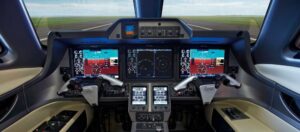
Although Embraer put their own personal touch on Garmin’s G1000 for the Phenom 300, the Prodigy Touch cockpit is based on the original G3000 Integrated Flight Deck. The original Phenom 300 comes equipped with a Prodigy system based on the G1000, so for pilots, the “E” makes a pretty big difference on the 300E.
With Embraer’s Prodigy Touch, there are still three panel displays, just like in the original Phenom 300, but those displays are now 14.1 inches, compared to the 12.4-inch displays in the Prodigy G1000 cockpit. As we know from the CJ3+, the G3000 also uses touchscreen technology, which the G1000 does not.
According to AIN Online, the touchscreen controllers at the top of the pedestal are a game changer.
“These controllers, which serve as primary data-entry points, have an icon-driven interface built on an easy-to-navigate menu structure, enabling access to systems and sensors with fewer keystrokes or page sequences. In a demonstration last month, AIN found the Prodigy Touch controllers icon menu easy to use and navigate, and the touchscreen inputs were very accurate.”
Charlie’s Insights (From our Buyers’ Guide for Single-Pilot Planes)
Embraer’s Phenom 300 was the most delivered business jet in both 2013 and 2014 for a reason. The Phenom 300 was created after Embraer realized that fans of their successful Phenom 100 would like a larger aircraft, and according to Flying Mag, “it is, in essence, Embraer’s attempt to stretch the limits of the light jet segment by creating an airplane with best-in-class performance, comfort and utility while keeping operating costs at turbo-prop levels.” Its best assets are in line with the Phenom 100: cabin comfort, speed, reliability, and low operating costs. The increased size allowed Embraer to nearly double the max fuel weight, leading to an extended range of more than 1,900 miles, making it the perfect aircraft for a flight from Austin to New York City. Its range, which is among the top of the light jet class, is what sets it apart from the competition. Operators find the reliability to be exceptional, and the fleet support from Embraer, which has its roots as a regional airline supplier, is top-notch.
HondaJet Elite (G3000)
The HondaJet HA-420 is yet another futuristic single-pilot jet that takes advantage of the touchscreen capabilities of Garmin’s G3000 cockpit. Honda describes their version of the G3000 as “highly customized” with select enhancements:
- Stability and Protection with Roll and Angle of Attack (AoA) Functions: Provides enhanced safety features for manual flying by implementing Roll Angle and Angle of Attack functions in the Automatic Flight Control System (AFCS), which will deter aircraft operation outside the normal flight envelope.
- AoA Indicator: Provides more enhanced pilot low-speed awareness by offering a pilot-selectable AoA indicator that is fully integrated with the HondaJet’s Stall Warning/Protection System (SWPS).
- Performance Management: Provides optimized performance planning for all phases of flight such as cruise speed/altitude, fuel flow, etc.
- Takeoff/Landing Distance (TOLD) Management: Provides automatic computation of required runway length, V-speeds, climb/approach gradients, etc.
- AFCS Coupled Go-Around with Underspeed Protection (USP): Following a missed approach, the aircraft’s autopilot remains connected, enhancing aircraft safety and reducing pilot workload.
- Garmin’s Flight Stream 510 functionality is implemented throughout the avionics system and allows the flight crew to share flight plan data, primary flight data, and weather data between the Garmin G3000 and a personal device using the Garmin Pilot App or ForeFlight.
Charlie’s Insights (From our Buyers’ Guide for Single-Pilot Planes)
Honda’s first jet, the HondaJet HA-420, features a light, all-composite fuselage and a drag-reducing over-the-wing engine mount configuration. Its General Electric/Honda HF120 engines are capable of giving the HondaJet 35% higher fuel efficiency than similar aircraft. The sleek, all-glass Garmin G3000 avionics suite includes dual touch-screen controllers and three 14-inch format displays, making the HondaJet incredibly easy to fly. This aircraft has a unique wing fixture that reduces drag unlike any other plane on the market. Originally due out in 2012, complications with engine certification and susceptibility to ice damage delayed the much-anticipated jet’s first deliveries into 2015.
Cessna 208B Grand Caravan (’08 and up have G1000)
The first turboprop on our list is Cessna’s 208B Grand Caravan, a heavy-duty aircraft most often used for cargo missions. In 2008, Cessna replaced the Grand Caravan’s original avionics system with Garmin’s G1000, and in 2018, Cessna announced new optional upgrades that come standard on new models.
Options new to the Caravan series include Garmin’s Enhanced Automatic Flight Control System (E-AFCS) with automated features designed to help pilots retain an optimal envelope. The added features include Electronic Stability and Protection (ESP), Underspeed Protection (USP), Emergency Descent Mode (EDM), Coupled Go-Around and an auto-level function.
Other options include Garmin’s GSR 56 Iridium Satellite Data Transceiver Link, which provides near worldwide access to downlink weather services, as well as satellite voice communication and text message capabilities.
While not equipped with touchscreen capabilities, the G1000 glass cockpit isn’t much different from the G3000 from a capabilities perspective.
According to Garmin, “G1000 puts a wealth of flight-critical data at your fingertips. Its glass flight deck presents flight instrumentation, navigation, weather, terrain, traffic and engine data on large-format, high-resolution displays.”
The G1000 also features a customizable display, advanced AHRS architecture that replaces traditional gyroscopic flight instruments with the GRS77 Attitude and Heading Reference System (AHRS).
One of the biggest changes from the Grand Caravan’s original cockpit to the G1000 is “the first entirely new autopilot designed and certified for the 21st century,” the GFC 700. “The GFC 700 is capable of using all data available to G1000 to navigate, including the ability to maintain airspeed references and optimize performance over the entire airspeed envelope.”
Charlie’s Insights (From our Buyers’ Guide for Single-Pilot Planes)
Cessna’s 208 Caravan has been in production since 1982, with the 208B Grand Caravan making its first appearance in 1987. The 208B Grand Caravan was stretched by 4 feet, compared to the original Caravan I and comes equipped with more powerful PT6A-114A engines. The 208B Grand Caravan EX was certified in 2012, equipped with PT6A-140 engines that significantly improve its climb rate. The Super Cargomaster is the “pure cargo” version of the aircraft, which FedEx uses heavily. The 208B Grand Caravan is Cessna’s largest single-engine aircraft to date. The 208B holds 340 cubic feet of cargo, and has an optional “belly pod” that you can add for an additional 111 cubic feet of cargo space. Speed is clearly not its strong suit, with a 177-knot cruise speed and 1,275- fpm climb rate. It comes equipped with 14 passenger seats, though the FAA allows a maximum of nine passengers and two crew members on board a turbine aircraft. It also comes equipped with four doors, one for each crew member, an airstair door and a cargo door.
Quest Kodiak (G1000)
The Quest Kodiak serves a very similar mission to Cessna’s 208B Grand Caravan, so it makes sense that they’d use nearly identical avionics suites. The Kodiak Series II, introduced in 2018, used an upgraded version of the G1000 called the G1000NXi. Upgrades also include a Flight Stream 510 tablet connection device, an angle-of-attack indicator and a digital standby four instrument group.
According to Garmin, “The G1000 NXi system incorporates modern processing power that supports faster map rendering and smoother panning throughout the displays. Saving valuable time in the cockpit, the displays initialize within seconds after start-up, providing immediate access to frequencies, flight plan data and more. The G1000 NXi system also incorporates contemporary animations, modernized design for improved readability and new LED back-lighting, offering increased display brightness and clarity, reduced power consumption, as well as improved dimming performance.”
Charlie’s Insights (From our Buyers’ Guide for Single-Pilot Planes)
Although the Quest Kodiak didn’t enter production until 2008, design of the aircraft began in 1999, and its first flight took place in 2004. One of the major draws to the Kodiak is how easily its configuration can be changed to fit your mission, thanks to the easily removed track-mounted passenger seats. Its cargo door makes it easy to load and unload for utilitarian purposes, and an executive interior with club seating is available, as well. Not known for its power, the Quest Kodiak has a normal cruise speed of 150 knots and a climb rate of about 1,370 fpm. Its range is a modest 1,000 nautical miles. Its runway performance, however, is the best in its class, requiring only 1,700 feet for takeoff and 1,500 for landing. It’s also one of the cheapest turboprops to operate.

